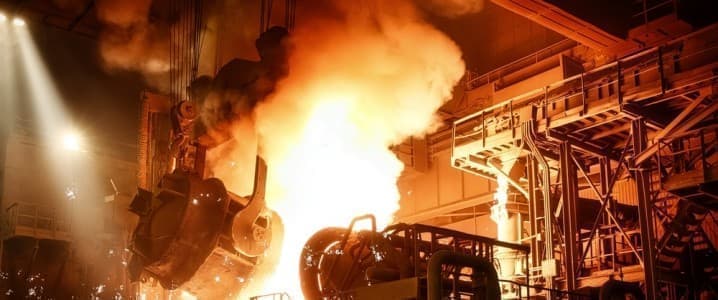
Iron ore prices have experienced a notable increase this week, defying the prevailing weakness in the steel industry. This rise has left analysts puzzled, particularly given that China’s steel production and local consumption have not shown significant recovery. Experts in the sector suggest that this surge may indicate a disconnect between raw material demand and steel output, highlighting the complexities of the current market dynamics.
Iron ore is a critical raw material in steelmaking. As a result, the futures markets for iron ore are particularly sensitive to fluctuations in steel production, demand, and profit margins. Analysts point to forecasts that predict China will reach record steel export levels by the end of 2025 as a driving factor behind the recent uptick in iron ore prices. Currently, Beijing has set a cap of 1 billion tons of steel output per year, which has not yet been reached, allowing for the possibility of increased production driven by exports before the year concludes.
In addition to export potential, some reports suggest that certain Chinese steel mills are stockpiling iron ore in anticipation of a possible rebound in construction and infrastructure driven by government policy. While evidence supporting a comprehensive recovery remains limited, ongoing stimulus efforts by Beijing have fostered a sense of optimism among traders and analysts. This sentiment may also contribute to rising iron ore futures as expectations grow for an improvement in domestic steel demand in the final quarter of the year, a period when construction activity typically intensifies.
China’s domestic steel market has recently cooled due to a downturn in the property sector and other policy-related challenges. The real estate market has historically been a major consumer of steel in China. Yet, analysts remain hopeful that an uptick in demand from other sectors, such as manufacturing, could partially offset the decline in real estate activity, leading to a slight increase in domestic steel consumption.
After experiencing a decline in steel output for three consecutive months, Chinese mills ramped up production in early September, with daily output averaging 2.087 million tons, reflecting a month-on-month increase of approximately 7%. According to a Reuters analysis, steel production fell to 77.37 million metric tons in August, marking its lowest level since December 2024. Some of this decrease was attributed to temporary production curbs related to a military parade.
Despite the lower domestic demand, iron ore imports surged in August, reaching 105.23 million tons, with forecasts for September indicating a potential increase to 112.2 million tons. This situation allows Chinese steel producers to offer competitive pricing in international markets. Industry analysts expect elevated steel exports from China to persist through 2025, driven by attractive pricing, overseas infrastructure projects, and strategic trade partnerships.
The China Iron and Steel Association is actively collaborating with procurement leaders to stabilize raw material supply chains, which further supports the export capacity of steel producers. While official export figures for the third and fourth quarters of 2024 remain pending, analysts anticipate that 2025 will meet or exceed the high levels recorded in 2024. Factors contributing to this outlook include a weaker yuan, which enhances export competitiveness, and sustained demand from regions such as Southeast Asia, Africa, and Latin America.
Despite tariff measures imposed by various countries to limit imports of cheaper “Made in China” steel, China’s reliance on exports and its resilience in the global market continue to reshape international steel flows. This scenario poses pricing volatility risks for countries dependent on Chinese steel, while also pressuring their domestic producers. For China, exporting steel serves as both a relief valve for excess capacity and a buffer against domestic economic uncertainties.






